Next up in our site artists series is Marie Elgaard of Lille Kage Hus in Randers, Denmark. Marie, as you may recall, won top honors in Practice Bakes Perfect Challenge #13 for the banner and backdrop she designed for the month of February, which are now beautifying our site.
You might be wondering, “But it’s art for February and it doesn’t have any hearts. What gives?!” We’ll get into the motivation behind Marie’s entry in due time; for now, let’s agree to shelve that question until we’ve gotten to know Marie a bit better. And, in the meantime, just trust me when I say, “No hearts make complete sense!” ![]()
![]()
JMU: Hi, Marie! It’s rare that I do interviews with our members living outside of the United States. Of course, it’s not that I wouldn’t love to; it’s just that I’m hampered by very poor foreign language skills. (I wish I’d listened more closely in middle school class . . .)
That being said, it’s great to know that you’re “here” with us today, all the way from Denmark. And it’s perhaps even greater to learn that you’re actually a Danish transplant who harks from England! (Phew – I won’t have to take that Rosetta Stone class after all! ![]() )
)
So, when and why did you move from England to Denmark?
![]()
ME: Hi, Julia! Well, initially, I moved from England to Switzerland to be with my Danish husband, as he was working there. My eldest daughter was just starting university in England, studying nursing. I was home-schooling my youngest daughter, who at the time was 12, and continued to do so for the year we lived there. Once my husband’s contract finished in 2013 (he makes Facebook games), we decided to move to Denmark to be near his family, and so he could work with his business partner on a new game - which he is still working on! (Developing games is perhaps one of the only things more time-consuming than making cookies! ![]() )
)
![]()
JMU: Wow, developing games might also be cooler than making cookies! Okay, well maybe I wouldn't go that far . . . ![]() I know you’re selling cookies now via Lille Kage Hus, but were you making and selling cookies in England, prior to your move to Denmark? What and/or who first got you interested in making cookies, and in ultimately turning that interest into a business?
I know you’re selling cookies now via Lille Kage Hus, but were you making and selling cookies in England, prior to your move to Denmark? What and/or who first got you interested in making cookies, and in ultimately turning that interest into a business?
![]()
ME: Before last year, I’d never decorated a cookie apart from drizzling a bit of glaze on gingerbread. In England, I worked designing resources for kindergartens as part of a training programme for nursery nurses. Before that, I was teaching 14- to 19-year-olds with barriers to learning. [EDITOR'S MUSING: Wow, how many more interesting - and admirable - jobs could this one family have?!]
I started decorating cookies because I saw a lovely recipe for gingerbread bunting and wondered how to get the icing so smooth. So I found a Martha Stewart video on flooding cookies. She suggested using five-second consistency – I am amazed the icing even stayed on the cookies! Despite a wobbly start, I was encouraged by the results. I then found the brilliant blogs of Sweet Sugarbelle, SweetAmbs, and LilaLoa, and not long after, Cookie Connection. By March of last year, I had some people express interest in buying my cookies, and I thought I would just give selling them a go.
![]()
JMU: So how long have you been operating Lille Kage Hus, which, by the way, means “Little Cake House” in Danish? Do you also sell cakes and cupcakes, or is “cake” the word for “cookie” in Danish? I also understand you don’t have a retail storefront, but do you operate out of your home or another establishment with a commercial kitchen? Why did you decide to operate this way?
![]()
ME: While I started selling cookies and cupcakes in March 2015, it of course took a little while to get regular orders. Cookies are called “small cakes” in Danish, which I thought was rather a nice word for cupcakes too, so I called myself the Little Cake House. I make the cupcakes and cookies at home and often mail cookies around the country. I decided not to look into a storefront, as I thought that I simply couldn’t cover the overhead of operating that way, especially as I am still very new to cookie decorating. There had been a sweet little cupcake shop in my local town, which closed after only nine months, so I took that very much as a clue that it wasn’t the way forward for me.
![]()
JMU: So, I'm guessing it's then legally possible to operate and sell cookies out of your home in Denmark, right? What sorts of permits or certificates did you need to get in order to launch your business there?
![]()
ME: If you are selling directly to the public, you can operate a cake/cookie business from home without any permits, certificates, etc. If you decide to start supplying retailers, then you need to be inspected by the Food and Agriculture Department.
![]()
JMU: Interesting . . . I guess they don't want the red tape (and cost) of trying to monitor a lot of small at-home businesses, which makes sense. You're lucky. There can be so many bureaucratic hoops to jump through to launch a home-based food business in the United States, and those hoops can vary tremendously from state to state, and even within a state. The snarl of red tape here in Missouri was highly frustrating!
Do you also teach cookie decorating or participate in the cookie world in some other way? In other words, roughly what percent of your time, on average each week, is spent cookie decorating to fulfill customer orders, cookie decorating for some other reason, or doing other non-cookie work or personal things?
![]()
ME: I don’t yet teach cookie decorating for two reasons, really. First, I feel I am very much still learning, and I am not confident that I am at the necessary skill level to teach just yet. I would hope to be in the future. Second, my spoken Danish really needs to improve – I get incredibly nervous speaking, as the accent is very hard to get right! So, this year, I am returning to language school to try to improve.
I make cookies for customer orders pretty much every day from around 8 am to 5 pm. I do usually spend some time on the weekend either planning cookie sets or sometimes making cookies for the Practice Bakes Perfect challenges. So when I do get a spare moment, it tends to be used to tackle the increasing piles of laundry and dust and to spend time with my family.
![]()
JMU: Gosh - I know that accumulating dust phenomenon all too well! ![]()
What have been the most difficult aspects of starting and growing Lille Kage Hus? And how have you tackled those challenges?
![]()
ME: I think my biggest personal challenge has been the language. Doing something brand new to me, and then attempting to market it in another language has been a challenge! I have found though that my written Danish has improved enormously, and I am hoping that my spoken Danish will soon follow suit. Other than that, decorated cookies are virtually unheard of in Denmark, so introducing something different has taken quite a bit of work. I found that working with popular lifestyle bloggers really helped me to gain some traction.
Unfortunately, this year my father was diagnosed with vascular dementia, and he declined very rapidly, passing away in September. So I was in England quite often and unable to take orders during that time, which of course impacted how much I could grow Lille Kage Hus. The loveliest thing is: he absolutely loved the cookies, and I always took him some in my hand luggage when I visited.
![]()
JMU: Oh, I am so sorry to hear about your Dad. But I am sure that cookie memory with him will forever be held close to your heart.
How, if at all, do you think the cookie market/industry is different in Denmark than in the United States or elsewhere in the world? For instance, is there a growing demand for decorated cookies, or are cakes, cupcakes, or something else the favored sweet? Are customers willing to pay a premium for a custom-decorated set, or is there often some customer education involved when discussing price like there is here in the United States?
![]()
ME: Denmark is slightly behind the trends being seen in the United States, United Kingdom, and Australia/New Zealand. At the moment, fondant-covered cakes have become incredibly popular, and there are many people offering celebration cakes made at home. Many Danes like to keep to tradition. There is, for instance, a type of birthday cake called a Cake Man, which is a very popular pastry formed into the shape of a boy or a girl decorated with gummy sweets. When the birthday boy or girl cuts the cake, s/he cuts it at the neck, and everyone screams! For weddings and confirmations (which are a very big deal in Denmark), a kransekage is traditionally served. It is a tiered stack of circular marzipan biscuits decorated with icing and Danish flags.
I think a big turning point for me was sitting and thinking, "What do Danes like?" The answer was very obvious to me – ice cream! Danes are obsessed with it. ![]() So I made the above set and was delighted that it caused so much interest. Ice cream cookies, with new baby cookies being a close second, have been my biggest seller. In general, I have found my customers to be very understanding of the time it takes to make cookies and so accept the prices very well. I’ve been incredibly lucky.
So I made the above set and was delighted that it caused so much interest. Ice cream cookies, with new baby cookies being a close second, have been my biggest seller. In general, I have found my customers to be very understanding of the time it takes to make cookies and so accept the prices very well. I’ve been incredibly lucky.
![]()
JMU: These cultural differences are fascinating to me, so let me push this line of questioning a little further . . . How, if at all, do you think cookie flavor, texture, and decorating preferences differ in Denmark as compared to the United States or other parts of the world?
![]()
ME: I have been making cookies based very much on recipes from the United States – apart from my gingerbread, which is an English recipe, but I don’t think it differs greatly. Danish cookies tend to be a bit too crumbly to decorate.
Decorating preferences tend to be toward more simple designs. Danes also love their designer items, and I am often asked to recreate a pattern, or to tie a cookie set to a child’s room. For instance, the above Cam Cam pattern-inspired baby shower set was designed to match the baby’s linens. Recently, I received a request for a wedding cookie featuring an Arne Jacobsen egg chair, but I’m still figuring out how I might make that work! At Christmas, I took my inspiration from all of the beautiful decorations I saw in the shops, like these nisse (Christmas gnome) cookies on heart shapes – hearts are seen everywhere in Denmark at Christmas. I think the Danes really love to see the traditional done in a new way, which is something I hope to explore more this year.
![]()
JMU: I love how you've taken the time to understand consumer preferences and to analyze your market - I am sure your thoughtfulness will pay off greatly!
Does Denmark have a strong cookie tradition in any way, or a signature cookie like the macaron in France or the chocolate chip cookie in the United States?
![]()
ME: Denmark has a fantastic cookie tradition, and their cookies are utterly delicious. The most famous would be Danish Butter cookies, which certainly in England you can find in lovely tins around Christmas time.
![]()
JMU: I see lots of pastels, clean lines, and wet-on-wet accents on your cookies, but how would you characterize your cookie decorating style? How/why did you go about developing this style? From where or whom do you draw inspiration for your designs?
![]()
ME: It’s really hard for me to actually pin down what my style is. I am definitely attracted to lighter colours, but I feel I am still working my way around cookies and developing at the moment. I am most comfortable with making cookies for children, as that’s where my work background lies. In part, I think the reason that my style includes a lot of wet-on-wet is because it was one of the techniques that really made me feel I was getting somewhere. I learnt it from watching SweetAmbs' videos, so I do like to incorporate it quite often. A lot of the colours are inspired by products I see around me. I think my initial pastels were based on some Easter tins I had bought, which were very much the basis for the cookies pictured above - one of my very first sets that I offered for sale.
![]()
JMU: Well, you may not be able to pin down your style, but I would definitely call it "lovely"! ![]()
Now let's talk about your winning banner and backdrop a bit – and why there are no Valentine’s hearts in it! ![]() As you mentioned in your entry, the cats and masks represent elements of Fastelavn, a Danish carnival that is celebrated in February on either the Sunday or Monday before Ash Wednesday. Can you tell us a little bit more about this festival? Are there any signature cookies or other baked goods involved?
As you mentioned in your entry, the cats and masks represent elements of Fastelavn, a Danish carnival that is celebrated in February on either the Sunday or Monday before Ash Wednesday. Can you tell us a little bit more about this festival? Are there any signature cookies or other baked goods involved?
![]()
ME: Very much like Carnival and Mardi Gras around the world, Fastelavn is celebrated on or around Shrove (or Fat) Tuesday. After Denmark became a Protestant country, Fastelavn began to adopt some distinctive traditions. The celebrations are very much focused on children, who will dress up in costumes and perhaps take part in parades. In the distant past, it was tradition to have a black cat in a barrel and hit it with sticks to safeguard against evil, but, today, a kinder alternative exists. Instead, piñata-type barrels with paper cats, confetti, and candy are hit by the children. Whoever manages to hit the barrel and release all of the candy is crowned the King or Queen of Fastelavn.
As always, there is pastry involved with this Danish holiday. Fastelavn boller (carnival balls) are a pastry filled with cream and topped with icing. The children will sing a song whilst (optionally) hitting their parents with twigs and demanding Fastelavn boller! The hitting with twigs could be a throwback to fertility rituals, though some think that it was the way that more pious children of the past reminded their parents of the suffering of Jesus at Easter. Houses are decorated with Fastelavnris (which is what my challenge entry depicts in edible form): twigs adorned with cats, pom poms, carnival masks, and sometimes crowns for the King and Queen of Fastelavn.
![]()
JMU: So fascinating, again. Thanks for all of those details! What was the most challenging part of designing your entry, and how did you work through those challenges?
![]()
ME: I was keen to do something that was perhaps a bit different, and I also wanted very much to try to keep in mind the colour scheme of the new website (which looks amazing by the way). [EDITOR'S NOTE: Thanks!] So initially, it was most challenging to think of something that would combine the two elements that I was looking for. I also wanted to keep the set simple, so it would hopefully not be too distracting. I felt the Fastelavnris decorations were a good example of an international holiday and would allow me to use the colour scheme I wanted. I was quite time-limited, but was really happy to be able to take part. I think the second most challenging thing for me was photography and sizing. I am not a natural photographer, so it’s often a bit of a stumbling block with me every time I take pictures of my cookies. I am hoping to get better this year, and to perhaps see about taking a course to help with it in the future.
![]()
JMU: Aside from a possible photo course, what new cookie plans do you have in the works for you and Lille Kage Hus in 2016?
![]()
ME: For 2016, I am keen to develop more of a style of my own and to keep improving on techniques by taking some classes. I have enrolled in a couple of Craftsy classes so far and have already found them very helpful, but I would like to attend some non-virtual classes too.
![]()
JMU: There's always room for more professional development! And lastly, a new set of parting questions that I will soon be asking of all of my interviewees (!): What do you love most about cookie decorating? And, what, if anything, would you change about cookie decorating if you could?
![]()
ME: I love the sense of community in the cookie world. There is a huge amount of encouragement and support from seasoned cookie decorators encouraging everyone wanting to take those first steps into cookie decorating. Other than that, the feeling of improving nearly every time you sit down to ice is incredibly satisfying, and seeing that happen for others too is really lovely. I don’t think I would change a thing.
![]()
JMU: What nice parting thoughts! Well, I certainly feel I learned a lot about Danish traditions and cookie preferences from your answers! Thanks for taking us on a rich cross-cultural journey by so thoughtfully responding to my questions. I look forward to seeing more of your wonderful work throughout 2016!
All cookies and photos by Marie Elgaard.
Interested in learning more about Marie? I bet you are! Please check out her site and visit with her on Facebook!

Cookier Close-ups is the place on Cookie Connection where we celebrate the change-makers of the cookie decorating world. Whether forging new enterprises, inventing novel decorating techniques, or consistently charming us with their cookie decorating prowess, each of our featured thought leaders has redefined in his/her distinctive way how we interact, create, or otherwise do business here in cookie space!
If there are other cookiers you'd really like to get to know, please post requests in this forum. We'll do our best to round them up for an upcoming Cookier Close-up! Thanks!

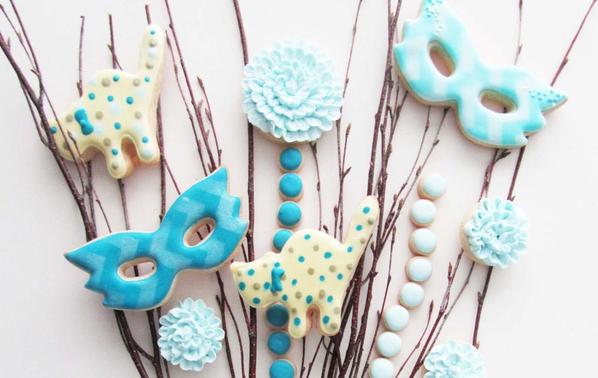

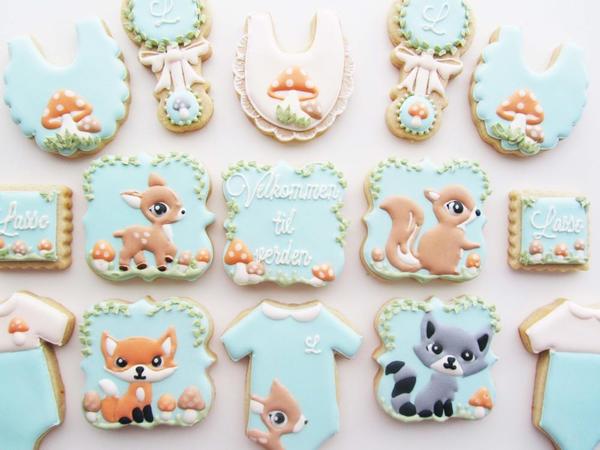
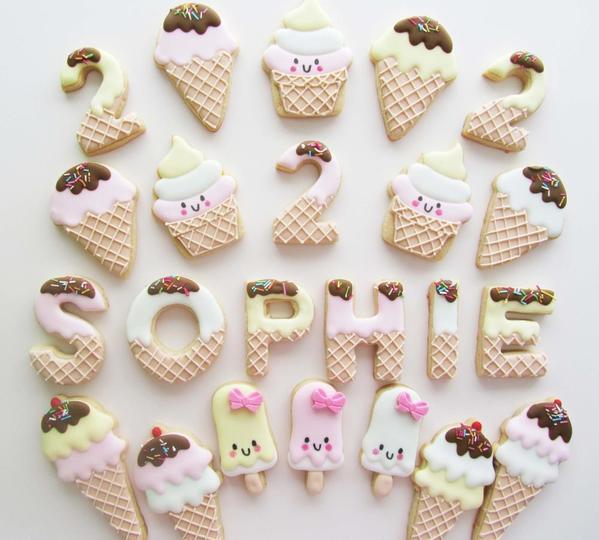
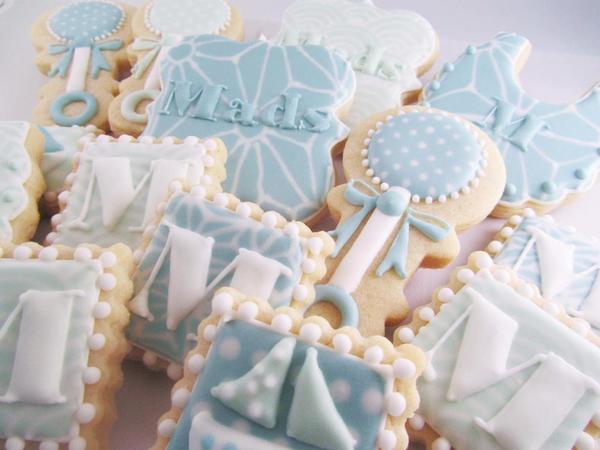
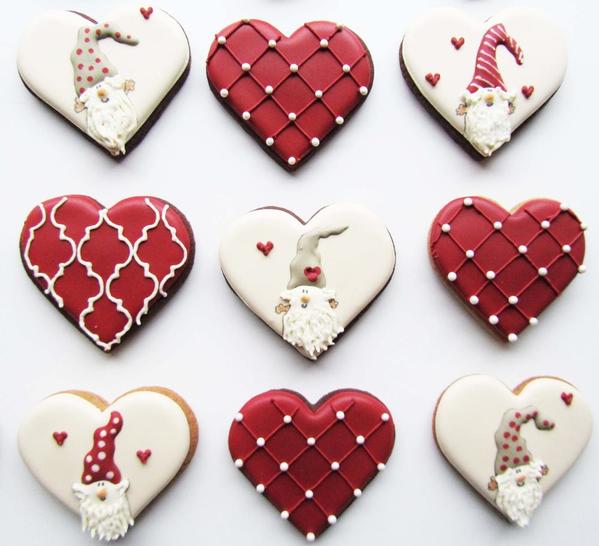
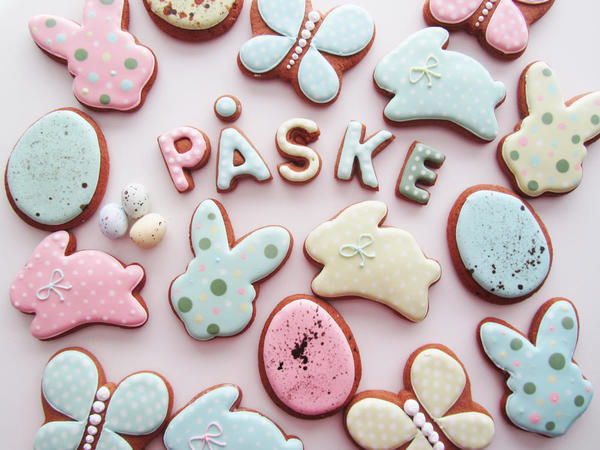
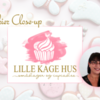

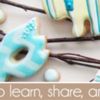
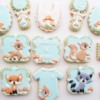




Comments (28)